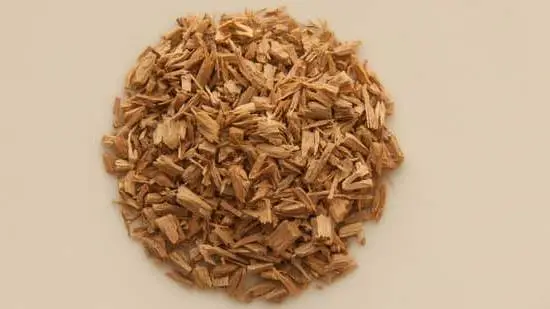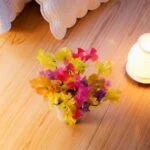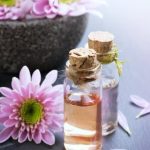Are you curious about the world of aromatherapy and essential oils? Look no further. This article is a complete guide to aromatherapy and essential oils, delving into their uses, benefits, and methods of application. Whether you’re new to this practice or a seasoned enthusiast, there is something for everyone to learn and explore.
Aromatherapy and essential oils have been used for centuries for their therapeutic properties. But what exactly are they and how are they used? In this section, we will break down the basics of aromatherapy and essential oils, including their origins, composition, and practical applications. From promoting relaxation to enhancing mood, these natural substances offer a wide range of benefits for your overall well-being.
As we embark on this journey through the world of aromatherapy, it’s important to gain a comprehensive understanding of its history, scientific evidence, various types of essential oils, and methods of application. By the end of this article, you will have a thorough knowledge of how to incorporate aromatherapy and essential oils into your daily life for improved health and wellness.
The History of Aromatherapy
Aromatherapy has a rich history dating back thousands of years, with evidence of its use in ancient civilizations such as Egypt, China, and India. The practice of using essential oils for therapeutic purposes has evolved over time, influenced by various cultures and traditions.
Ancient Roots
The roots of aromatherapy can be traced back to ancient civilizations where aromatic plants and their extracts were used for medicinal, spiritual, and cosmetic purposes. In ancient Egypt, essential oils were highly regarded for their healing properties and were used in religious rituals, embalming practices, and as beauty treatments. The famous Ebers Papyrus, an ancient medical text from around 1500 BCE, contains recipes for aromatic oils and ointments used for various ailments.
Modern Era
In the 20th century, the term “aromatherapy” was coined by French chemist René-Maurice Gattefossé after he accidentally discovered the healing properties of lavender oil when treating a burn. This led to further research into the therapeutic uses of essential oils and the development of modern aromatherapy practices.
Contemporary Practices
Today, aromatherapy has gained widespread popularity as a holistic approach to health and wellness. It has become integrated into complementary and alternative medicine practices, offering natural remedies for a wide range of physical and emotional ailments. The evolution of aromatherapy continues as scientific research explores its potential benefits and the development of new applications for essential oils in modern healthcare settings.
The Science Behind Aromatherapy and Essential Oils
Aromatherapy has been used for centuries as a holistic healing treatment, and the use of essential oils is known to have various benefits on mental and physical health. The science behind aromatherapy and essential oils reveals the proven effects that make this practice so popular. Understanding these effects can help individuals make informed decisions about using aromatherapy in their wellness routines.
Proven Benefits of Aromatherapy
Research has shown that aromatherapy can have a positive impact on reducing stress and anxiety, improving sleep quality, managing pain, and boosting overall mood. Different essential oils have different properties and can be tailored to address specific health concerns. For example, lavender oil is often used for relaxation and better sleep, while peppermint oil is known for its energizing and invigorating effects.
The Effects of Essential Oils
Essential oils contain biologically active compounds that can be absorbed through the skin or inhaled into the olfactory system. When inhaled, these compounds can stimulate areas of the brain that are responsible for emotions, memory, and behavior. When applied topically, essential oils can be absorbed into the bloodstream and produce physiological effects within the body. For example, tea tree oil is known for its antimicrobial properties when applied to the skin.
Evidence-Based Research
Numerous studies have been conducted to explore the therapeutic effects of essential oils on various health conditions. Research has shown promising results in using aromatherapy to alleviate symptoms of depression, anxiety, insomnia, headaches, and even certain respiratory conditions. While more research is needed to fully understand the mechanisms behind these effects, the existing evidence supports the use of aromatherapy as a complementary approach to health and wellness.
Understanding the proven benefits and effects of aromatherapy and essential oils provides insight into why this practice has endured throughout history. With scientific research backing its efficacy in promoting well-being, it is no wonder that aromatherapy has become a popular self-care tool for many individuals seeking natural remedies for their health concerns.
Different Types of Essential Oils
When it comes to essential oils, there is a wide variety of options available, each with its own unique properties and potential uses. Some popular essential oils include lavender, tea tree, peppermint, and eucalyptus.
- Lavender oil is known for its calming and soothing properties, often used to promote relaxation and improve sleep quality. It can also be used topically to help soothe minor skin irritations.
- Tea tree oil is commonly used for its antimicrobial and antiseptic properties. It can be effective in treating acne and other skin conditions, as well as providing respiratory relief when inhaled.
- Peppermint oil is often used to ease headaches and promote digestive health. Its cooling sensation makes it a popular choice for topical application, while its refreshing scent can be invigorating when diffused.
In addition to these oils, there are many others with their own distinct benefits. From citrus oils like lemon and sweet orange to floral options such as rose and jasmine, the world of essential oils offers something for everyone. Understanding the unique properties and potential uses of each oil can help individuals make informed choices about which ones may best suit their needs.
Finally, it’s important to note that not all essential oils are safe for everyone or every situation. Some essential oils may cause irritation or adverse reactions in certain individuals, while others may not be suitable for use during pregnancy or with certain medical conditions. It’s crucial to thoroughly research each essential oil before use and consult with a qualified healthcare professional if necessary.
| Essential Oil | Main Uses |
|---|---|
| Lavender | Calming, sleep aid, skin soothing |
| Tea Tree | Antimicrobial, antiseptic, acne treatment |
| Peppermint | Headache relief, digestive health support |
Methods of Aromatherapy
Aromatherapy offers various methods of application, each with its own set of benefits and considerations. Whether you prefer the convenience of a diffuser, the simplicity of inhalation, or the targeted approach of topical application, there is a method that can suit your lifestyle and needs. Below are some insights into the different methods of aromatherapy:
- Diffusers: A popular choice for many, diffusers disperse essential oils into the air in a fine mist, allowing for easy inhalation and creating a pleasant atmosphere. There are different types of diffusers available, including ultrasonic, nebulizing, heat, and evaporative diffusers. Each type has its own way of dispersing essential oils and may have specific advantages depending on your preferences.
- Inhalation: Directly inhaling the aroma of essential oils can be done by adding a few drops to a bowl of hot water or using a personal inhaler. This method allows quick and direct access to the benefits of essential oils and can be especially helpful for targeting respiratory support or providing emotional relief.
- Topical Application: Applying essential oils directly to the skin is another common method of aromatherapy. When diluted with a carrier oil, such as jojoba or coconut oil, essential oils can be safely used for massage, skincare, or targeted pain relief. It’s important to note that some essential oils may cause skin irritation if not properly diluted, so always perform a patch test before widespread use.
By familiarizing yourself with these methods of aromatherapy, you can determine which approach aligns best with your preferences and needs. Whether you’re looking to create a calming environment at home through diffusion, seeking respiratory support through inhalation, or experiencing targeted relief through topical application, there’s an aromatherapy method suited for you.
Aromatherapy for Health and Wellness
Aromatherapy has been used for centuries to promote mental and physical well-being. The use of essential oils can have a profound impact on our overall health, as their therapeutic properties can help alleviate stress, anxiety, and even physical ailments. Here are some ways in which aromatherapy can support mental and physical well-being:
- Stress Reduction: Certain essential oils such as lavender, rose, and chamomile have calming properties that can help reduce stress and anxiety levels.
- Mood Enhancement: Citrus oils like lemon and orange can uplift mood and promote a sense of positivity and happiness.
- Improved Sleep Quality: For those struggling with insomnia or restless sleep, oils like lavender, cedarwood, and bergamot can be diffused or applied topically to promote relaxation and improve sleep quality.
In addition to promoting mental well-being, aromatherapy has also been found to have a positive impact on physical health. Some essential oils possess anti-inflammatory, antimicrobial, and analgesic properties that can aid in the relief of physical discomfort. Here are some popular essential oils and their potential physical health benefits:
- Peppermint: Known for its ability to relieve headaches, muscle aches, and digestive issues.
- Eucalyptus: Used for its decongestant properties and as a natural remedy for respiratory issues such as colds and sinus infections.
- Tea Tree: Recognized for its antimicrobial properties that make it effective in treating minor cuts, wounds, and skin irritations.
Overall, incorporating aromatherapy into your daily routine can have a significant impact on both your mental and physical well-being. Whether it’s through diffusing essential oils at home or using them in massage therapy sessions, the therapeutic benefits of aromatherapy are not to be underestimated. However, it’s important to remember that while essential oils offer many benefits, they should be used with caution and under the guidance of a qualified professional to ensure safety and efficacy.
Aromatherapy in Everyday Life
Aromatherapy can be integrated into various aspects of everyday life, offering a natural and holistic approach to well-being. One way to incorporate essential oils into daily routines is through the use of household diffusers.
These diffusers disperse the aromatic molecules of essential oils into the air, promoting relaxation and a pleasant atmosphere at home or in the workplace. For those who prefer a more direct approach, topical application of diluted essential oils can be used as part of self-care rituals, such as massage or skincare routine.
Many individuals also find that incorporating aromatherapy into their self-care routines can help manage stress, anxiety, and promote better sleep quality. Whether through indulging in a relaxing bath with essential oils, practicing meditation with the aid of soothing scents, or using essential oil-infused skincare products, aromatherapy can play a significant role in supporting mental and emotional well-being.
In addition to personal well-being, essential oils can also be utilized for household purposes such as natural cleaning agents and insect repellents. By harnessing the power of botanical extracts, individuals can reduce their reliance on chemical-based products and create a more eco-friendly environment at home. However, it is important to always follow safety guidelines when using essential oils to ensure proper usage and mitigate potential risks.
| Aspect | Details |
|---|---|
| Incorporating Essential Oils | Diffusers, topical application |
| Self-Care Benefits | Stress management, better sleep quality |
| Household Use | Natural cleaning agents, insect repellents |
Safety and Precautions in Aromatherapy
In conclusion, while aromatherapy and essential oils offer numerous benefits for mental and physical well-being, it is crucial to understand the importance of safety and precautions. Proper usage of essential oils is essential to avoid potential risks and adverse effects.
It is important to always dilute essential oils before applying them to the skin and to perform a patch test to check for any allergic reactions. Additionally, pregnant women, young children, and pets should use essential oils with caution, as certain oils can be harmful to them.
It is also important to store essential oils properly in a cool, dark place and out of reach of children. Care should be taken when using diffusers, as prolonged exposure to certain oils in concentrated form can cause respiratory issues. Furthermore, it is advisable to consult a qualified aromatherapist or healthcare professional before using essential oils, especially if one has existing health conditions or is taking medications.
Overall, by understanding proper usage and potential risks associated with aromatherapy and essential oils, individuals can enjoy their many benefits while minimizing any potential negative impacts on their health. With the right knowledge and precautions in place, incorporating aromatherapy into daily life can be a safe and enjoyable way to enhance overall wellness.
Frequently Asked Questions
What Are the 10 Best Essential Oils to Try for Aromatherapy?
Some of the best essential oils to try for aromatherapy include lavender, tea tree, peppermint, eucalyptus, lemon, bergamot, chamomile, rosemary, ylang-ylang, and frankincense. Each of these oils has its unique scent and potential therapeutic benefits when used in aromatherapy.
Is Aromatherapy and Essential Oils the Same Thing?
Aromatherapy and essential oils are not exactly the same thing, although they are closely related. Aromatherapy is a holistic healing treatment that uses natural plant extracts to promote health and well-being. Essential oils are concentrated liquids containing volatile aroma compounds from plants, which are used in aromatherapy to elicit specific responses from the body and mind.
How Do You Make Your House Smell Good With Essential Oils?
There are several ways to make your house smell good with essential oils. You can use a diffuser to spread the aroma throughout your home or add a few drops of essential oil to a spray bottle filled with water and mist it around the house.
Another option is to add a few drops of essential oil to a cotton ball and place it in areas where you want to eliminate odors or simply enjoy the pleasant scent. Additionally, you can mix essential oils with baking soda and sprinkle it on carpets before vacuuming to freshen up the space.

Are you looking for a natural way to improve your health and wellbeing?
If so, aromatherapy may be the answer for you.





